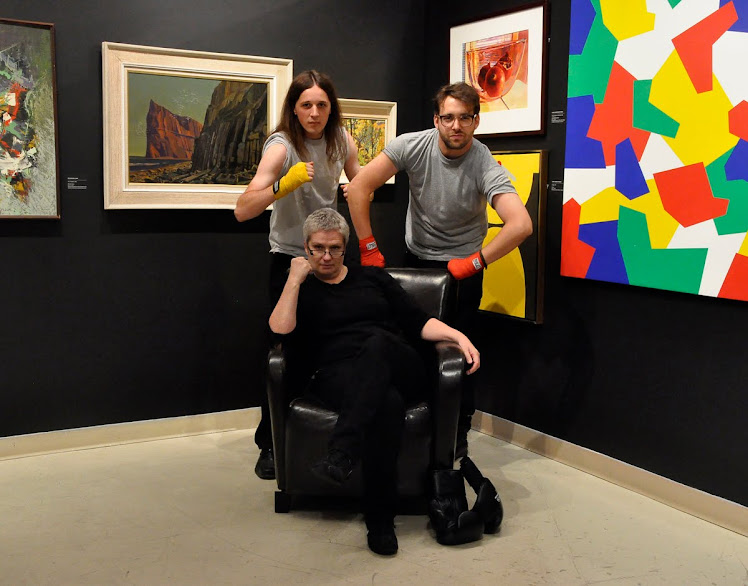
 At left, the actual Lake Placid, New York State
At left, the actual Lake Placid, New York StateIn a catalogue from the Swift Current National Exhibition Centre, June 18 - July 18, 1981, Milne is presented as, "one of Canada's foremost painters, who, by sheer personal commitment developed his own pathways amid the canons of nationalism. Through painting David Milne has chosen to see the world as a search for design - a challenge that is handed over to us," when we look at his work. What might be in contrast to this view comes from a letter dated March 17, 1931, from David Milne to the then Director of the National Gallery of Canada. In it, the artist is describing his work and basically helping the Director through an understanding of it. "The real subject is concerned with (1) line (2) the separation of colour into black and white values and hues (3) the arrangement - the use of the blank space, light in value..." I would like to look at this work as falling somewhere in between these two quotes.
The reason that I want to look between these two quotes is that I think they are both right. I think that today, Milne's work does carry with it a nationalist undercurrent, a distinctly Canadian feeling. However, after reading about the artist, and even the artists' own words, I do not believe that he purposely set out to establish a nationalist dictum through his painting. The man is portrayed as more of a recluse, eliminating everything in his life that could possible interfere with painting. He was committed to his practice, and is reportedly quoted as saying that he would rather die than not paint. The point is that his main interest and conviction does seem to be a long-term investigation into the qualities of paint and the experiences of painting. Even in his letter to the Director of the National Gallery he takes time to point out that all of these academic things are post-mortem to the painting; all after-thoughts taking off from the physical remnants of the experience of painting.
I think that the time period that he was working, and therefore his contemporaries, have made it easy for us to put a nationalist label on Milne's work. Certainly, his work is something to be proud of with its' Canadian roots. We like to hold onto our homegrown artists, and see a little bit of ourselves in their work. It is much the same in how we associate with the rugged landscapes and sweeping vistas that the Group of Seven painted; this is our home and native land. When you consider that the artist lived in upper New York state for a few years before finally settling in Canada permanently, it appears that Milne didn't see national borders as having any impact on the world around him that he was attempting to paint.
This work is also the first direct landscape in the exhibition. Though there is one print, titled Northern Landscape, it is not a landscape in a literal sense. It is exciting to include a literal landscape because it draws many connections while also opening many doors. The abstract artists that are included in the exhibition thus far have nearly all cited nature as their inspiration, and after considered viewings of the work, this is fairly easy to see. Looking back at my first choice in the Smackdown, Donald Harvey's Off Centre, I now see a planetary grouping of shapes and colours, floating on a blue background. The other artists, who in general are doing more figurative works, are dealing with a social landscape and its representation. I hope that Milne's literal landscape can help to realize a bridge between the abstract works and the figurative works, moving towards a unified exhibition, albeit one with a wide-gaze. It is still exciting to see what my competitors choose today, as well as tomorrow, but it seems that a landscape would inevitably make its way into the Smackdown. Going back to Smackdown 1, Cam's first choice was a large landscape painting.
There are definitely some threads emerging both from within our collection, as dictated by the karmic coffee tin, as well as within the exhibition. It is my hope that tomorrow we will get some good karma and some flexible locations from which to choose and end up with the most unified exhibition as is possible through a process like this. Hopefully this Milne selection will contribute towards that end. More on Milne later!
Darryn

No comments:
Post a Comment